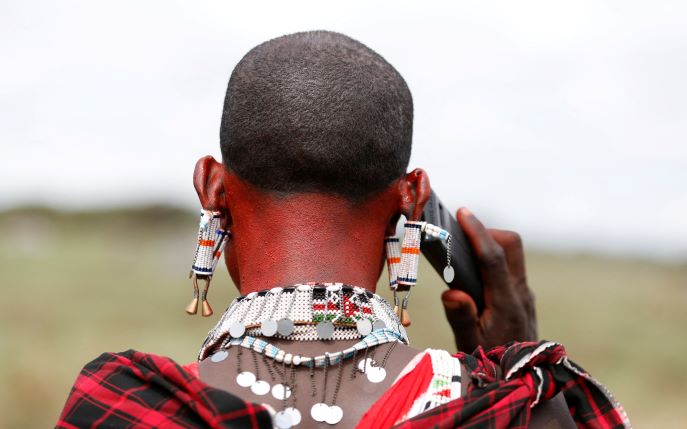Mark Hillsdon reports on the growing appetite to allocate capital in ways that make a difference, but without sacrificing returns
Environmental, social and governance funds have had a rough ride over the past couple of years, attracting criticism from regulators for greenwash, and from socially minded investors for investing in companies that may be good at managing the increasing risks from climate change, but aren’t doing anything to solve it.
Increasing awareness of the shortcomings of mainstream ESG may be fuelling interest in impact investment as an alternative. Earlier this year the Global Impact Investing Network (GIIN), a U.S. non-profit advocacy group, reported that the market was now worth $1.64 trillion.
Amit Bouri, chief executive of the GIIN, says there is “undeniable momentum” behind the industry, which is about allocating “capital in a way that actually drives progress on the world’s most pressing issues … in a way that can achieve financial objectives and achieve impact objectives.”
Impact investing is not philanthropy. It has a very clear view that there has to be financial performance, combined with impact performance
GIIN was created with seed funding from the Rockefeller Foundation in 2009, specifically to build the global market for impact investment by helping investors to “sharpen their focus on the role investment capital can play in adapting to climate change,” says Bouri.
In the early days, it was all about philanthropic foundations, development finance institutions and wealthy individuals. But this has changed. “The majority of activity is now from private investors,” he says, such as large pension funds, insurance companies, global banks and wealthy individuals.
Maria Teresa Zappia, deputy chief executive at impact investors BlueOrchard agrees. “Impact investing is (about) pursuing social and environmental growth alongside financial returns. It is not philanthropy. It has a very clear view that there has to be financial performance, combined with impact performance,” she says, ensuring that fiduciary responsibilities are still fulfilled.

BlueOrchard, which has $3.5 billion under management, was acquired by asset manager Schroders in 2019, in a deal valuing the 20-year-old company at more than 100 million pounds. As of December 2021, BlueOrchard had invested over 9 billion pounds across more than 90 countries, helping 230 million poor and vulnerable people in emerging and frontier markets to get access to financial and related services.
“You are really fine-tuning your investment universe, so there is effectively an additional selection and filtering of investment opportunities,” Zappia explains. However, it “doesn’t need to be a dilemma between high impact and low returns.”
One key area where there is a huge opportunity for impact investment is in financing climate adaptation. A big theme at the last two COPs has been how the people in frontier and emerging economies, who are most at risk from climate change, are also ill-equipped to protect themselves. Many of these economies are also more dependent on fossil fuels.
There is a whole array of climate solutions that are very much climate impact investments, but that are under-financed
According to the United Nations Environment Programme (UNEP), the annual adaptation costs in developing countries alone are set to double by 2030, to $140 billion annually.
Beyond funding for major infrastructure projects such as sea walls to prevent storm surges, there is a huge need for more innovative climate adaptation strategies such as more resilient crops, new irrigation systems and water-efficient industrial processes. This calls for more investment in the startups that are creating these game-changing technologies, businesses which often struggle to find capital from conventional sources.
“There is a whole array of climate solutions that are very much climate impact investments, but that are under-financed,” says Bouri.
In rural Kenya and India, Bouri says, impact investment has supported programmes that rent solar panels on a subscription model, and which have transformed village life. Investors are also looking to back small to medium enterprises (SMEs) seeking to radically transform mobility with electric rickshaws and scooters.

Much impact investment is in partnership with public sector sources, such as the multilateral development banks, which provide catalytic funding to help reduce risk for private investors (See ‘Get the blend right’ and we can unlock trillions).
BlueOrchard recently announced a partnership with Finnfund, an impact investment company that is 95% owned by the Finnish state, to provide $20 million in debt investment to help telecom provider Africa Mobile Networks expand its service to another 35 million people in sub-Saharan Africa.
Another example is Germany’s development finance agency GIZ, which, among other initiatives, is running a Private Adaptation Investment Bootcamp, helping seven impact investors build a portfolio in the area of climate change adaptation, and providing individual technical assistance, peer-learning and networking opportunities for 15 adaptation SMEs from Kenya and Nigeria.
Corporations have a lot of assets and increasingly are thinking about how they can invest their capital to have a positive impact
The Landscape Resilience Fund (LRF) is an impact-driven private-public partnership that mobilises private climate finance for vulnerable smallholders and landscapes. With a $25 million commitment from anchor investor Chanel, the LRF provides investment, soft loans and technical training to adaption-focused SMEs and projects, which gives them better access to private investors. It is aiming to mobilise $100 million by 2026.
Root Capital, meanwhile, is a not-for-profit organisation with a focus on rural livelihoods and has so far invested more than $1.6 billion – largely from foundations and individuals – into agricultural enterprises that are building a more prosperous and resilient rural communities, by providing credit and capacity building.
BlueOrchard is also creating a new market for tailored, affordable climate insurance that covers smallholder farmers against extreme weather events, which can devastate both the crops and the livestock that are often the only source of household income. As well as weather data, farmers also receive advice on the effective use of fertiliser and how to select crops that are much more suited to the current climate situation. For investors, while each insurance policy is relatively small, the returns come in the sheer number of people that take up the offer.

BlueOrchard is also investing in the “insuretech” companies like Skymet Weather Services, which provides weather and crop yield information service to the insurance sector in India, using more than 4,000 automatic weather stations. Investment has helped the network to expand, and it now reaches 20 million farmers, allowing them to better manage the impact of climate and weather events on harvest through smartphone based insurance.
Bouri also sees a growing role for corporations ‒ more often seen as investee rather than investor – in the market. A company may be looking at ways of introducing regenerative agriculture across part of its supply chain, he says, and may commit to partly funding this by investing their assets and then partnering with other impact investors.
“They also have a lot of assets and increasingly are thinking about how they can invest their capital to have a positive impact,” he explains.
It’s another untapped channel that could allow a flood of new finance to flow into helping communities adapt and build resilience for an unpredictable future.
Mark Hillsdon is a Manchester-based freelance writer who writes on business and sustainability for The Ethical Corporation, The Guardian, and a range of nature-based titles including CountryFile and BBC Wildlife.
This article is part of the Winter 2022 in-depth Financing the Transition briefing. See also:
Reality bits as finance firms row back on their climate pledges
‘Get the blend right’ and we can unlock billions in finance for Global South
Pact to decarbonise heavy industry through corporate purchasing power picks up steam
Can fossil fuel industry sell world on ‘net-zero oil’?
Energy crisis boosts drive to cut emissions from buildings
ESG: The investment world’s troubled teen is forced to grow up
Calls grow for companies to disclose nature impacts in bid to plug finance gap
How deforestation risk continues to be a blind spot for bankers
Needed: a sea-change in climate finance for oceans
Comment: To plug the green economy data gap we need regulators to mandate climate reporting
Comment: How companies can lead to make the energy transition work for people and planet
Global Impact Investing Network BlueOrchard climate adaptation Landscape Resilience Fund

